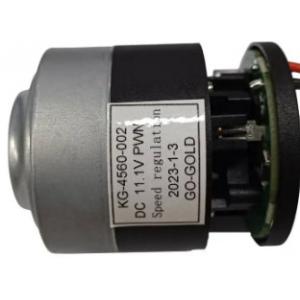
Add to Cart
Description:
COMPARING BLDC MOTORS TO OTHER MOTOR TYPES
Compared to brushed DC motors and induction motors, BLDC motors have many advantages and few disadvantages. Brushless motors require less maintenance, so they have a longer life compared with brushed DC motors.
BLDC motors produce more output power per frame size than brushed DC motors and induction motors. Because the rotor is made of permanent magnets, the rotor inertia is less, compared with other types of motors. This improves acceleration and deceleration characteristics, shortening operating cycles. Their linear speed/torque characteristics produce predictable speed regulation.
With brushless motors, brush inspection is eliminated, making them ideal for limited access areas and applications where servicing is difficult. BLDC motors operate much more quietly than brushed DC motors, reducing Electromagnetic Interference (EMI). Low-voltage models are ideal for battery operation, portable equipment or medical applications.
Basic Parameters:
Motor Structure Diagram:

Every 60 electrical degrees of rotation, one of the Hall sensors changes the state. Given this, it takes six steps to complete an electrical cycle. In synchronous, with every 60 electrical degrees, the phase current switching should be updated. However, one electrical cycle may not correspond to a complete mechanical revolution of the rotor. The number of electrical cycles to be repeated to complete a mechanical rotation is determined by the rotor pole pairs. For each rotor pole pairs, one electrical cycle is completed. So, the number of electrical cycles/rotations equals the rotor pole pairs.
Closed-Loop Control The speed can be controlled in a closed loop by measuring the actual speed of the motor. The error in the set speed and actual speed is calculated. A Proportional plus Integral plus Derivative (P.I.D.) controller can be used to amplify the speed error and dynamically adjust the PWM duty cycle. For low-cost, low-resolution speed requirements, the Hall signals can be used to measure the speed feedback. A timer from the PIC18FXX31 can be used to count between two Hall transitions. With this count, the actual speed of the motor can be calculated. For high-resolution speed measurements, an optical encoder can be fitted onto the motor, which gives two signals with 90 degrees phase difference. Using these signals, both speed and direction of rotation can be determined. Also, most of the encoders give a third index signal, which is one pulse per revolution. This can be used for positioning applications. Optical encoders are available with different choices of Pulse Per Revolution (PPR), ranging from hundreds to thousands.